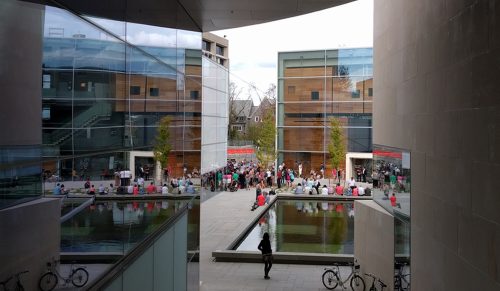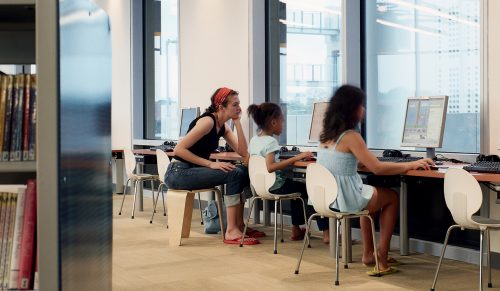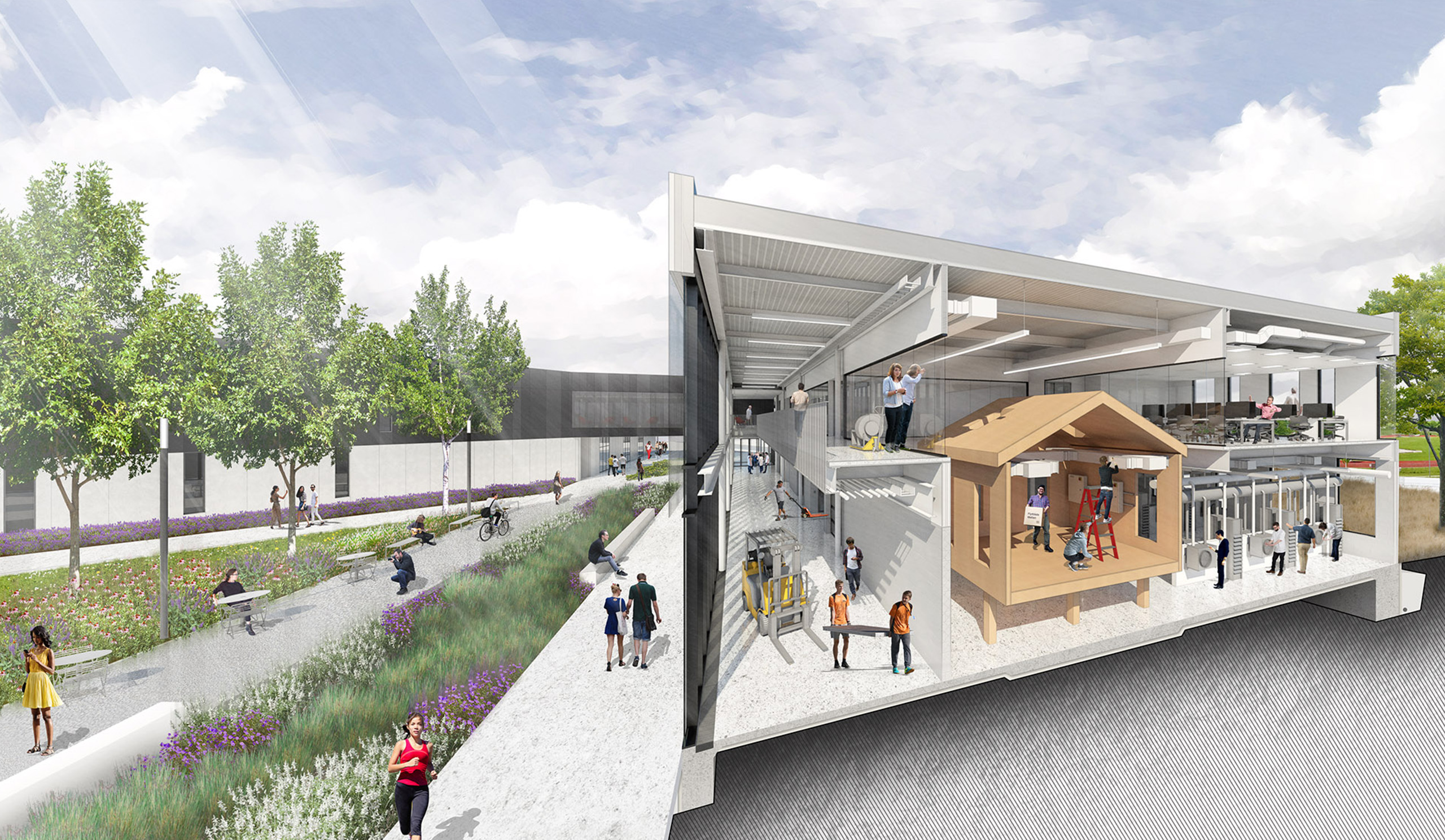
The Next Frontier in Innovative Experiential Learning
Student loan debt continues to explode. The technological advances now available have rapidly changed the manner in which education is delivered, and many of our nation’s universities simply can’t keep up. As Quartz recently pointed out, “the sluggishness owes to the fact that a university is made up of hundreds of stubborn, rooted parts. It is beholden to countless traditions and generations of students served in the past. And so disruption comes slowly…”
Interestingly, it is often community colleges — unfairly perceived by many as the stepchildren of higher education — that are very much at the forefront of innovative, experiential learning, and in many ways are well-equipped to position students for the transition already underway in today’s dynamic global economy.
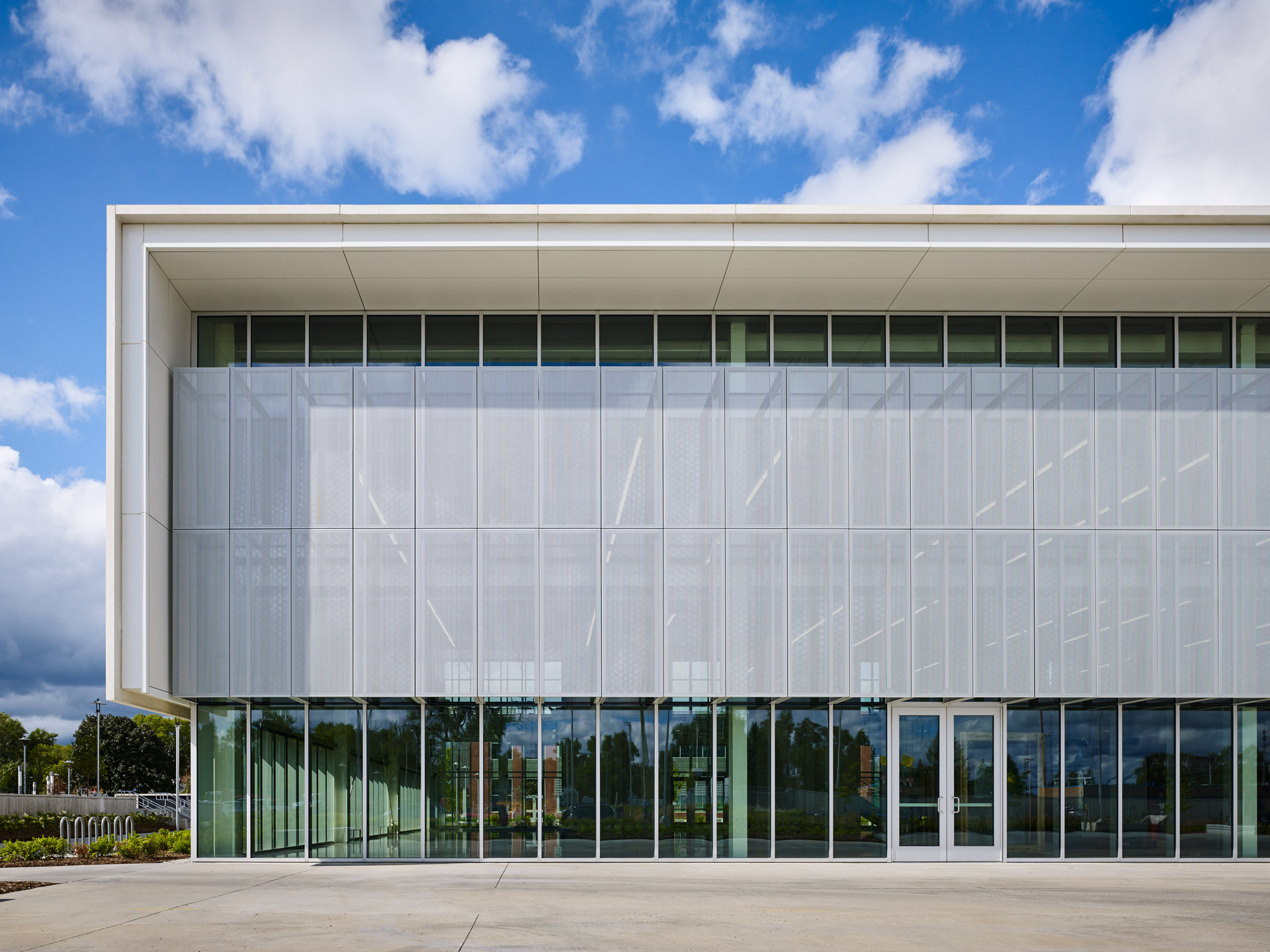 METROPOLITAN COMMUNITY COLLEGE — CENTER FOR ADVANCED AND EMERGING TECHNOLOGY
METROPOLITAN COMMUNITY COLLEGE — CENTER FOR ADVANCED AND EMERGING TECHNOLOGY
Consider:
– By 2020, an estimated 35 percent of job openings will require at least a bachelor’s degree, and 30 percent will require some college or an associate’s degree.
– Forty percent of college students are enrolled at one of America’s more than 1,100 community colleges, which offer students affordable tuition, open admission policies, and convenient locations. They are particularly important for students who are older, working, need remedial classes, or can only take classes part-time. For many students, they offer an affordable route to a four-year college degree.
– Community colleges are also uniquely positioned to partner with employers to create tailored training programs that meet economic needs within their communities, such as nursing, health information technology, and advanced manufacturing. (WHITE HOUSE SUMMARY, JANUARY 09, 2015)
The following are just some of the characteristics that position community colleges to be places of dynamic, transformative preparation and learning for years to come:
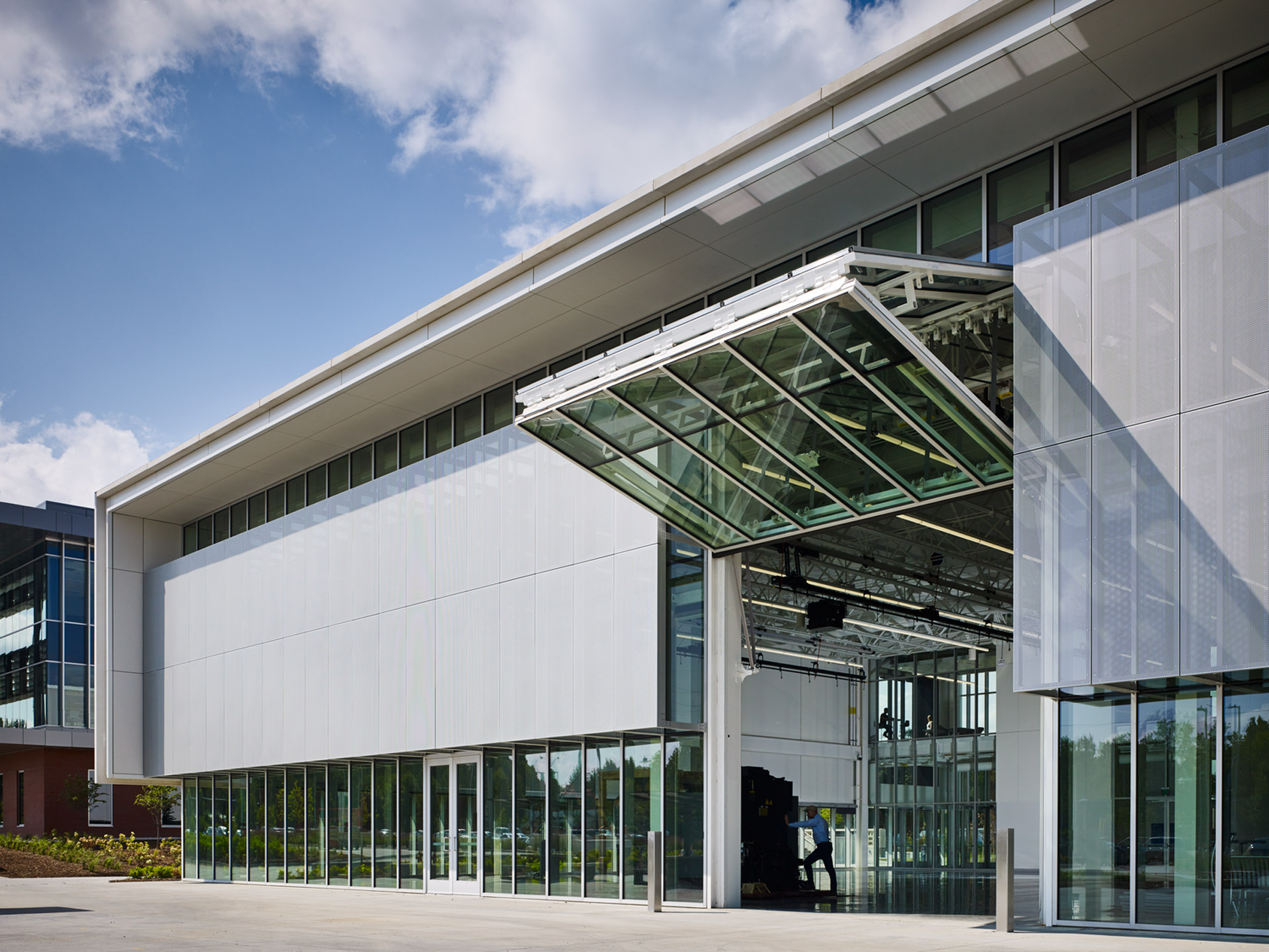 METROPOLITAN COMMUNITY COLLEGE — CENTER FOR ADVANCED AND EMERGING TECHNOLOGY
METROPOLITAN COMMUNITY COLLEGE — CENTER FOR ADVANCED AND EMERGING TECHNOLOGY
Doing More with Less
Traditionally underfunded compared to their higher education counterparts, many community colleges have developed a culture of responsible resource stewardship across their respective campuses. This often leads to a natural and strong commitment to high performing environments. The Tarrant County College Center of Excellence for Energy Technology (CEET) in Fort Worth, Texas, has achieved LEED Platinum certification with goals of net zero energy, and it has become quite literally a living teaching and learning laboratory.
Like CEET, the new Career and Technical Education (CTE) facility at Johnson County Community College (JCCC) in Overland Park, Kansas, is designed as a pedagogical tool, also allowing occupants to observe its inner workings and mechanics. Both facilities feature plumbing, electrical, mechanical, and structural components that are openly visible in strategic locations, giving students and visitors alike the opportunity to learn from the buildings’ systems on a daily basis. The CTE building will demonstrate the college’s strong commitment to technology and innovation, and will serve as a dynamic academic setting for the programs housed within, including HVAC, electrical, automation, automotive, and continuing education.
Finally, the Palomar Community College District Operations and Maintenance Complex in San Marcos, California, will house the district’s facilities personnel for buildings, grounds, and maintenance, as well as providing conference space, staff offices, and shop spaces at Palomar College and other satellite campuses. Innovative design strategies and the building’s unique passive design system decreased the required mechanical infrastructure, allowing the team to reallocate the budget towards design instead of building systems. This building is designed to achieve LEED Platinum certification and become the first Living Building Petal certified community college in the world, demonstrating the affordability of sustainable design, even within confined budgets.
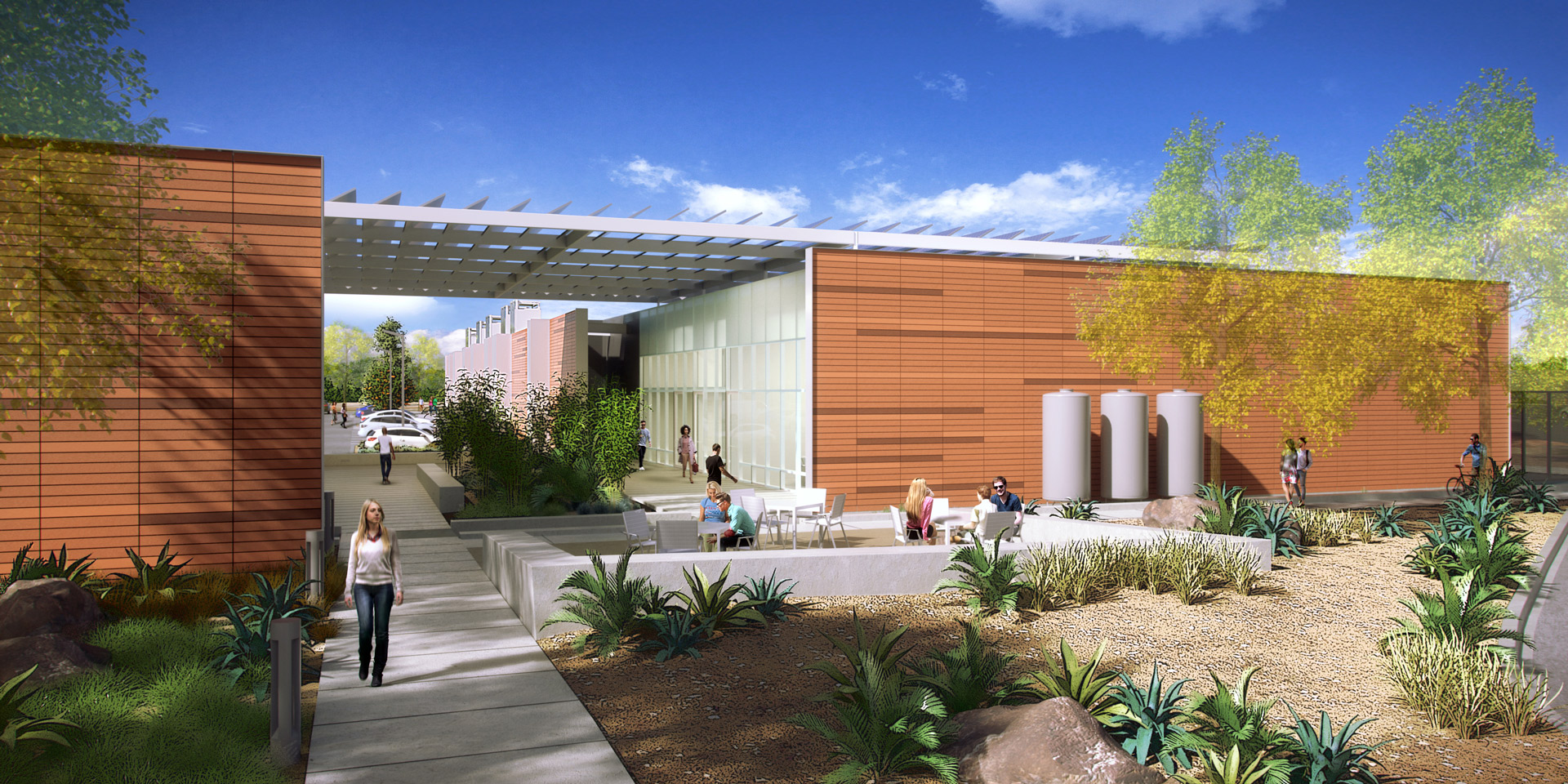 PALOMAR COMMUNITY COLLEGE DISTRICT – MAINTENANCE AND OPERATIONS COMPLEX
PALOMAR COMMUNITY COLLEGE DISTRICT – MAINTENANCE AND OPERATIONS COMPLEX
Experiential Learning
So much of the appeal of community colleges is the notion of “learning by doing” and the facilitation of customized or tailored offerings to meet people where they are in their lives. As an innovation hub where the “making of things” through prototyping, design and production can spur innovation and entrepreneurship, the Center for Advanced and Emerging Technology (CAET) at Metropolitan Community College (MCC) in Omaha, Nebraska, is designed around a variety of learning environments to facilitate experiential learning. The building provides collaborative office and conferencing facilities; active learning classrooms rich with analogue and digital technology; hands-on design and fabrication labs; emerging labs; and a high-bay innovation space. The equipment and technology were informed by the expertise of industry partners, mirroring the setups that students will utilize after graduation.
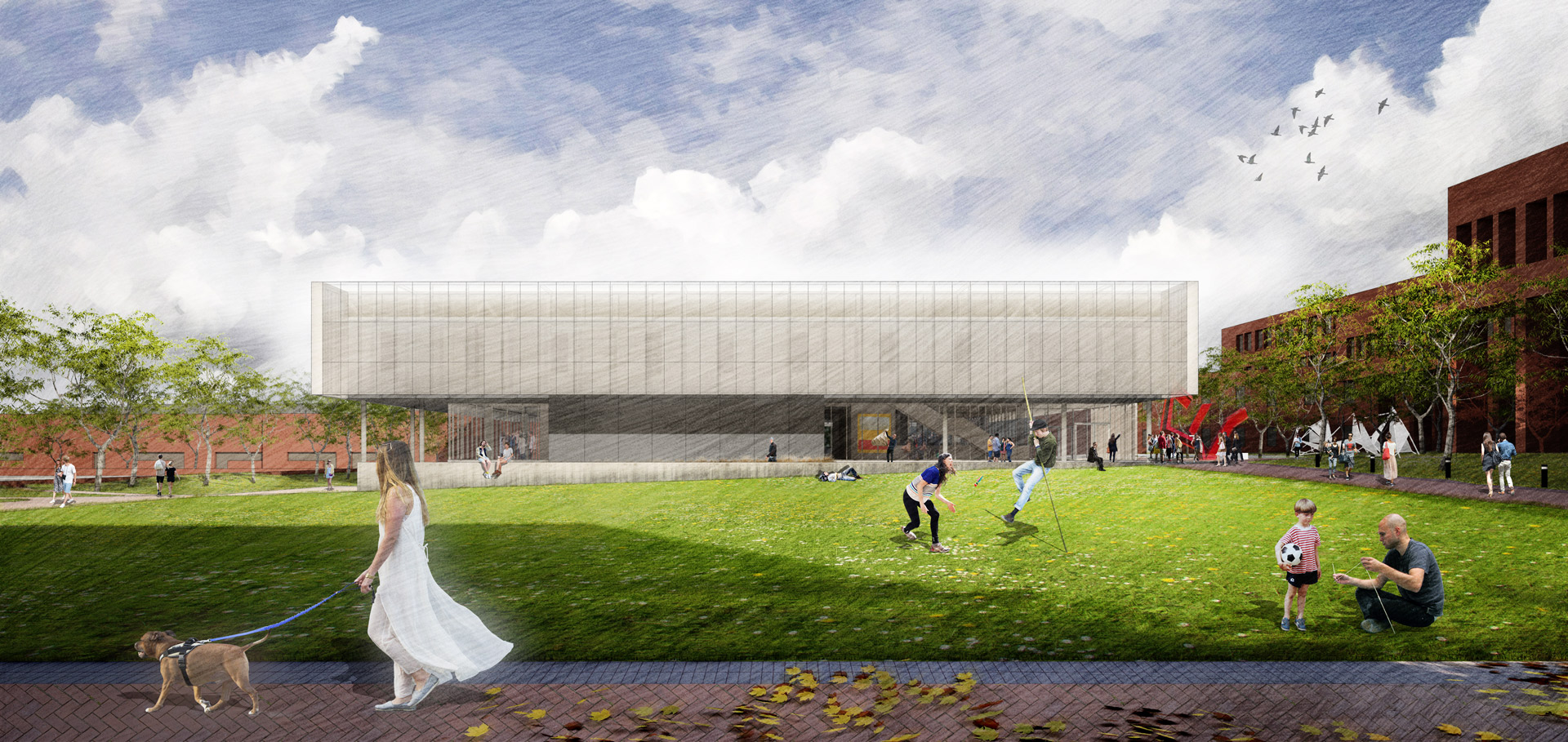 JOHNSON COUNTY COMMUNITY COLLEGE – FINE ARTS + DESIGN STUDIOS
JOHNSON COUNTY COMMUNITY COLLEGE – FINE ARTS + DESIGN STUDIOS
Long Life, Loose Fit
Central to the long-term success of many community college environments is the concept of “long life, loose fit” — that the ability to address future, unanticipated needs is something that can in fact be designed. In her excellent piece, Vanessa Quirk states that “many community colleges — by virtue of their being driven by fiscal responsibility — have been ahead of the curve in flexible design for decades. Without the resources to create single-use buildings for gyms, libraries, classrooms, etc., many community colleges have embraced the collaborative, hybrid spaces we are now seeing pop up in universities around the globe.”
The new Fine Arts + Design Studios building at JCCC in Overland Park, Kansas, is no exception, and it will bring students and faculty together from graphic design, sculpture, ceramics, metals, painting, drawing, photography, and filmmaking programs. By placing them under one roof, the building and its spaces will be functional, flexible, have plentiful daylight, and will provide a framework for new synergies and enhanced collaboration across disciplines that are currently dispersed across campus.
Community colleges will continue to provide tremendous value in part because they are simply more nimble compared to most alternatives, offer a well-balanced, highly customizable and personalized suite of useful offerings, and are open and accessible to everyone. It is the community colleges’ unique blend of resourcefulness, pragmatism, and innovation that is needed now more than ever.
